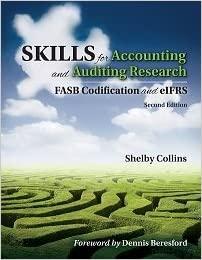

Part B - Group report: Question 1 The following was occurred prior to issuance of IFRS16 in 2016: Large transportation companies with large fleets need to look at the real impact on their business, according to NST on 1 March 2015. A decade after the idea was proposed, it's likely a new accounting standard will require businesses to recognise operating leases on statement of financial position. Under existing accounting standards, operating leases are not recorded on the financial statements. Bringing these leases on financial statements could trigger debt covenants for organisations with a large number of leased vehicles. This is because bringing operating leases on statement of financial position could increase a business's liabilities over and above levels agreed with lenders. Unlike finance lease contracts, under which ownership of the asset is transferred to the lessee at the end of the term, at the end of an operating lease ownership remains with the lessor. Exactly how an operating lease should be recognised on a statement of financial position is tricky, given the organisation that takes out the lease does not actually own the asset. The International Accounting Standards Board is expected to re-issue an exposure draft later this year for a standard that deals with recognition of operating leases on balance sheets after it received a flood of responses to its initial proposal. One detail that needs to be ironed out as indicated by one of the says a senior policy adviser, financial reporting, "Recognition of operating leases on statement of financial position is the recording of assets". He says, "It's easy to see how lease payments would work on the liability side, but it's trickier on the asset side, given that the business does not own the asset. Recognising operating leases as assets and liabilities on a statement of financial position could trigger bank covenants". Required: Read the article above and answer the questions below: (a) Explain how the new accounting standard in the case study would trigger the technical default of debt covenants. You explanation should include an example if a transportation company has assets of RM10 million, liabilities of RM6 million, and equity of RM4 million prior to take up a lease agreement with lease payment of RM3 million. (18 marks) (b) Pursuant to debt hypothesis, explain what is your prediction if this new accounting standard is released and its impact on the leases assets of the large transportation companies. (12 marks) [Total: 30 marks] Part B - Group report: Question 1 The following was occurred prior to issuance of IFRS16 in 2016: Large transportation companies with large fleets need to look at the real impact on their business, according to NST on 1 March 2015. A decade after the idea was proposed, it's likely a new accounting standard will require businesses to recognise operating leases on statement of financial position. Under existing accounting standards, operating leases are not recorded on the financial statements. Bringing these leases on financial statements could trigger debt covenants for organisations with a large number of leased vehicles. This is because bringing operating leases on statement of financial position could increase a business's liabilities over and above levels agreed with lenders. Unlike finance lease contracts, under which ownership of the asset is transferred to the lessee at the end of the term, at the end of an operating lease ownership remains with the lessor. Exactly how an operating lease should be recognised on a statement of financial position is tricky, given the organisation that takes out the lease does not actually own the asset. The International Accounting Standards Board is expected to re-issue an exposure draft later this year for a standard that deals with recognition of operating leases on balance sheets after it received a flood of responses to its initial proposal. One detail that needs to be ironed out as indicated by one of the says a senior policy adviser, financial reporting, "Recognition of operating leases on statement of financial position is the recording of assets". He says, "It's easy to see how lease payments would work on the liability side, but it's trickier on the asset side, given that the business does not own the asset. Recognising operating leases as assets and liabilities on a statement of financial position could trigger bank covenants". Required: Read the article above and answer the questions below: (a) Explain how the new accounting standard in the case study would trigger the technical default of debt covenants. You explanation should include an example if a transportation company has assets of RM10 million, liabilities of RM6 million, and equity of RM4 million prior to take up a lease agreement with lease payment of RM3 million. (18 marks) (b) Pursuant to debt hypothesis, explain what is your prediction if this new accounting standard is released and its impact on the leases assets of the large transportation companies. (12 marks) [Total: 30 marks]








